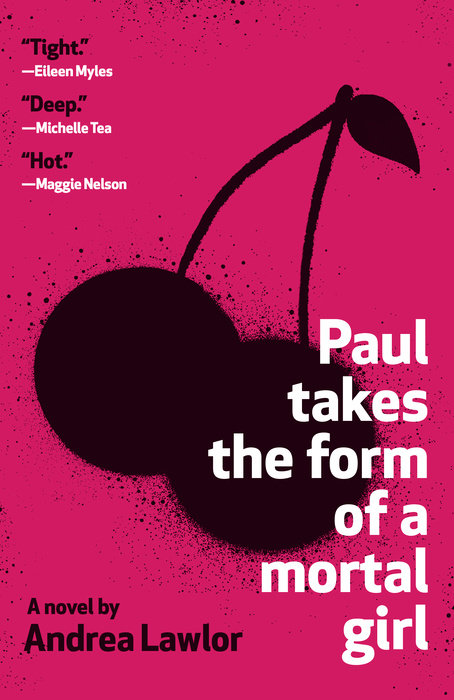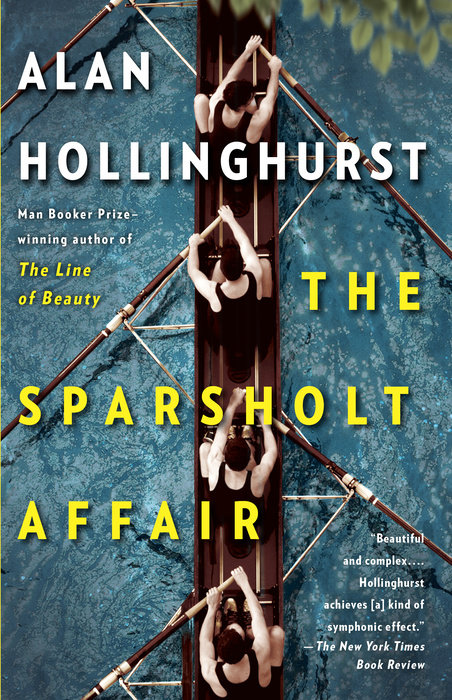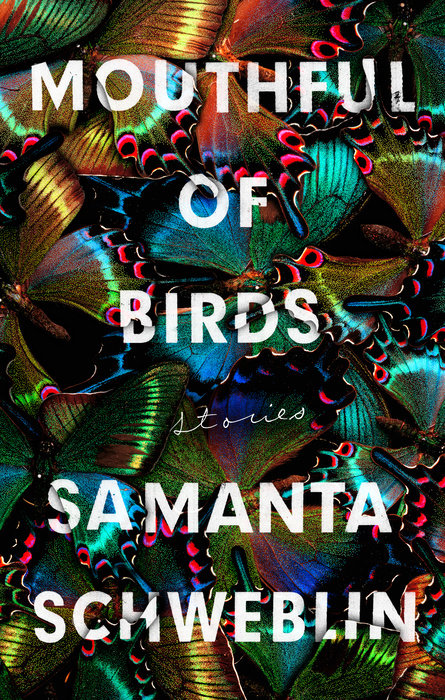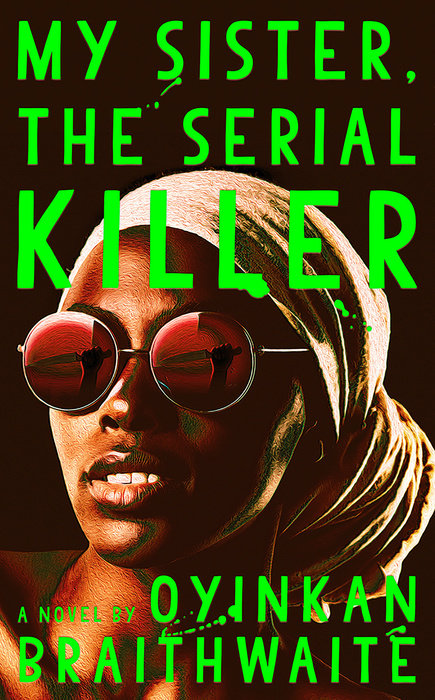Margaret Atwood often says that everything in The Handmaid’s Tale has essentially happened at some point in history—she didn’t have to make much up.
She is quoted on the cover of Miriam Toews’s new novel, Women Talking,which is also based on a real incident that is laid plain on the opening page: In a Mennonite colony not long ago, the men used animal anesthetic to knock out and attack the women and girls, who would wake with broken bodies and no memory of what had happened. God was blamed, so was the devil.
As in life, the fictional women in these pages are illiterate, they can’t use a map, and they have no idea what the world is like outside the colony. They gather in a hayloft over two nights to discuss what they have learned—it wasn’t God, it wasn’t Satan, it was the men—and what is to be done. Do they stay to punish the men? If so, how? Or do they flee? If so, how? What is the cutoff age for sons who get to come along, and whose sons must be left behind? Is staying or leaving the greater sin? Is their understanding of sin even accurate, since it has been conveyed to them by the men who’ve been taught to read? The entire novel is just this, the women’s discussion, over two long days. They must reach their decision before the men return home.
A hapless young man in love with Ona, who is pregnant from the attacks, takes minutes of the meeting at Ona’s request. Not always sure what he should and should not record, he attempts to record everything: the infighting, the lucid counterpoints, the way one woman, Agata, laughs by moving her upper body “to the left, to the right, to the left, a subtle dance she performs when she appreciates a joke, indicating she gets it, it’s a good one.” PLEASE READ
Women Talking by Miriam Toews, from Bloomsbury
Paul Takes the Form of a Mortal Girl
This is a novel about a queer punk shapeshifter in ’90s Iowa who is so busy having graphic encounters of every imaginable permutation that he struggles to find the time for his zine.
In Paul Takes the Form of a Mortal Girl, Andrea Lawlor’s novel newly rereleased by Vintage, twenty-three-year-old Paul can make himself taller, more muscular, scrawnier. He can make himself biologically female, adjust his cup size. He just has to focus. And then he steps into the night, wondering if he’ll live forever.
The forms he takes aren’t really about what another person wants. (Not usually.) His choices more about who he wants to be that night, and the kind of unconventional person he wants to attract in that form. It’s easy: dress to attract attention, to tell a story. Then, when somebody looks at you, he says, “Just look back; that was the whole trick.”
He doesn’t know why he is this way, why he can do this. But he is this way. He can do this. So as his journey takes him from leather bars to Womyn’s Festival tents to a Provincetown house-painting gig to a San Francisco bookstore, as he struggles to find his people and to treat them well, the question of his life is this: If he can be anybody he wants, who does he want to be? PLEASE READ
Paul Takes the Form of a Mortal Girl by Andrea Lawlor, from Vintage
Trust Exercise
Do you remember what adolescence smelled like?
The nerves, the excretions, the warm awkward bodies in airless rooms?
It’s actually a weird, fraught, gross era to romanticize.
There are three sections in Trust Exercise. All three are called “Trust Exercise.”
In the first, Sarah and David are adolescents in an elite art school, totally consumed by their relationship even before it is one. They crawl around in the dark and grasp for each other—they smell each other—because their theater teacher, Mr. Kingsley, asks them to do things like this. His strange little games will alter their trajectories.
As for those trajectories. This is a book best read, if you already feel an ember of interest, without reading more reviews about it first. The reasons that make this book unusually worthwhile are inherently spoilery even to acknowledge. Though I personally was most riveted by the first section, which is so intense and spongy, there are interesting detonations that follow. Let the author lead you toward them in the dark. PLEASE READ
Lie With Me
In a hotel lobby the impossible happens. A novelist giving an interview glimpses, just for a moment, a young man from his past—still young, decades later. He chases the young man and reaches for his shoulder. The young man turns.
In Lie With Me, the newly translated French novel by Philippe Besson, the man is flooded with memories of a forbidden adolescent affair.
In 1984, his last year of high school, the future novelist was a shy, bookish principal’s son, and he was obsessed with Thomas Andrieu, whose reticence was cooler—shaggy hair, cigarettes, faraway looks, white sneakers. One day, digging around in his backpack in the cold winter weather, just before class, the writer looks up to see those white sneakers right in front of him. Unimaginably, Thomas had been watching him, too. Waiting for a moment to speak. A moment when no one was around.
It begins.
Thomas leaves notes saying only when and where he can meet. They climb over walls and through small windows. At school they do not speak. The terms of their affair are exquisite and often annihilating, but the alternative—“If you prefer, we can stop,” Thomas says—is unimaginable.
So, at seventeen, is life after high school. So is aging. PLEASE READ
Lie With Me by Philippe Besson, from Scribner, translated from the French by Molly Ringwald
Kudos
Faye, a writer, meets a journalist who will be interviewing her on a park bench. They’ve met previously, years before. The journalist’s story of her quaint marriage stayed with Faye all this time—Faye admits she felt something like envy.
The journalist confesses that she intentionally cultivated an enviable version of her marriage for Faye, then shares what she believes to be the actual, much darker narrative.
Faye responds that the revised narrative only proves the journalist is a person who creates certain types of narratives out of her life, which says less about her life than it does about her talents as a writer for crafting narratives.
Then the journalist says she already drafted her new piece on Faye before this meeting, which wasn’t necessary.
This is how things go in Kudos, the final novel in Rachel Cusk’s trilogy, now out in paperback. In every direction the ground is thoroughly excavated, yet afterward nothing new can be built.
Like Outline and Transit, Kudos is a series of lengthy conversations, which are often more like monologues performed for Faye’s benefit. Of the many conversations in Kudos, four are scheduled interviews with journalists. There is a dark humor in the way these unfold—three books in, we suspect that in at least one meeting, Faye will not be asked to say a single word, and if she does speak, it will be in a conversation that is sexist, framed in a way that has nothing to do with her, or both. Even in an interview.
But we are never told how Faye feels. Seismic events in Faye’s life are mentioned in passing, usually by other characters. In some encounters it seems there is something about her that encourages people to open up, whether or not they know her. Others seem content to railroad her just because she’s there, either not caring or not grasping how she gently feeds them just enough conversational rope to hang themselves.
Rachel Cusk is now a writer who changes writers the way Joan Didion or James Baldwin might. She can be felt just over the shoulder, staring coolly at the laptop screen, not saying a word, until the writer deletes the new sentence and tries again. PLEASE READ
The White Book
Door. Newborn gown. Moon-shaped rice cake.
Fog. Frost. Wings. Fist.
The story Han Kang has to tell in The White Book is told through the color white.
The white door: scratched-up, rusty.
The moon-shaped rice cake: that’s how a baby’s face looked.
In winter, of course, everything seems to be white. And in a certain kind of darkness “imbued with even the faintest light, even things that would not otherwise be white glow with a hazy pallor.”
The narrator’s ruminations on white objects gradually usher in a character based on her lost sister. Who might the sister have become?
I got this book from the library. There were purple fingerprints on its stark white pages.
The book is short, sparse, consumed in a couple hours. Afterward I waded into Maggie Nelson’s Bluets. She fell in love with the color blue.
You never know what someone is going through. PLEASE READ
The White Book by Han Kang, from Hogarth, translated from the Korean by Deborah Smith
Convenience Store Woman
The employees gather before their shift starts. They practice their customer greetings.
“Irasshaimasé!” one says. “Irasshaimasé!” the others shout.
They’re ready. Keiko is ready. Stepping from the office to the floor of the immaculate, brightly lit convenience store is her favorite time of day.
“It feels,” she tells us, “like ‘morning’ itself is being loaded into me.”
In Sayaka Murata’s novel Convenience Store Woman, a job can offer a framework for human existence—but maybe not forever.
As a child, Keiko was different from the other kids. When she saw a dead bird, she brought it to her mother: “Let’s eat it!” She didn’t understand her mother’s horror. What was yakitori if not a dead bird?
And when a fight broke out between two boys at school, everyone yelled for someone to make them stop. So she got a spade from the shed and hit one boy on the head. They stopped, didn’t they?
As an adult, she finds the rules of convenience-store behavior are clear. A customer who picks up a cold beverage is about to approach the register; a clink of coins means she’s needed at the counter, quickly, to ring up someone who came in just to buy a newspaper.
She has been trained on what to say to the customers in all situations. The shop’s rules of etiquette govern her days, its needs govern her dreams. Her very body has become part of the store. She eats only its food, she drinks its water. She consumes it, she secretes it.
But she’s in her late thirties now, neither rich nor married, and her job may no longer be enough to shield her from other people’s expectations of her. PLEASE READ
Convenience Store Woman by Sayaka Murata, from Grove Press, translated from the Japanese by Ginny Tapley Takemori
Lot
Hope is hard to find in Houston, unless you just caught a chupacabra. Then you might go viral.
Of course, maybe this chupacabra is just a raccoon or something? These two boys aren’t sure.
In Bryan Washington’s new collection of connected short stories, Lot,the boys and dealers, the hustlers and hurricane survivors all intersect in the hot Houston streets—but home isn’t any easier.
A whole apartment complex watches the doomed affair between a married woman and her white neighbor. A dealer’s young apprentice watches behind the wheel when the dealer sees someone from his past.
And a boy who narrates several stories struggles with a father who’s first absent, then gone; a mother with a restaurant she may not be able to keep afloat; a sister with an eye on the exit sign; and an abusive, homophobic brother. When he comes out and his brother slaps him, he doesn’t feel it. PLEASE READ
Leading Men
Two pale blonde women, dressed identically in white, sit on a bed at Truman Capote’s party in Portofino. One holds a white Maltese.
“One of these women is the mother and one is the daughter,” Tennessee Williams says to his lover, Frank. “I dare you to tell me which is which.”
The answer is quite clear to Frank, but his diplomatic handling of the moment is the beginning of a long, fate-altering friendship between Tenn, Frank, and Anja Blomgren, the daughter, who becomes Anja Bloom, famous actress.
Christopher Castellani’s daring new novel, Leading Men, leaps across decades, oceans, and the truth-fiction divide to talk about art as it should be and love as it is.
Frank lies alone in a hospital, years after the party, waiting for Tenn to show.
Anja roams her apartment alone, an old woman now, waiting for her new young friend, Sandrino, who arrives every Monday to hear all about her life. About the play she has in her apartment, written only for her.
This book piles risk upon swaying risk—oh, the author is going to throw in a fake Tennessee Williams play, and oh, then we are going to read the fake Tennessee Williams play in its entirety, and then— PLEASE READ
The Friend
Grief takes many forms. Sometimes it’s a 180-pound Great Dane wedged into a tiny New York apartment where dogs are not allowed.
In Sigrid Nunez’s novel The Friend—which won the National Book Award, and is newly out in paperback—a tiny woman loses her friend to suicide, and unexpectedly ends up with his monstrous Dane, Apollo. She’s always been more of a cat person.
She is proud of herself for the glimmers of ingenuity that Apollo requires, including her use of a pail and sand shovel to handle the Dane’s bulky bowel movements on the sidewalks of Manhattan. But mostly she is lost in what the past might mean for the future.
She thinks about her friend’s three wives, and about their own meeting—she a student, he a professor.
She thinks about her own students, and whether fiction writing can withstand the present moment, whether it can change anything—her students can’t seem to process stories that don’t line up with the views they already have.
How impossible it seems now, she thinks, “to imagine anything like what led Abraham Lincoln to say, meeting Harriet Beecher Stowe, in 1862, So you’re the little woman who wrote the book that started this great war.”
Meanwhile, Apollo waits. PLEASE READ
The Friend by Sigrid Nunez, from Riverhead
The Sparsholt Affair
At Oxford in the 1940s, the nights are dark. Pitch black. Blackouts, so as not to illuminate any targets for WWII bombers.
The students scuttle and whisper with their flashlights. They stare at David Sparsholt. They conspire to shave when he’ll be standing at the same line of sinks, cocky, aloof, shirtless.
In Alan Hollinghurst’s The Sparsholt Affair, newly released in paperback, a forbidden crush can become like a gene, insinuating itself into the fates of future generations.
This is a world of painters and drunks, scholars and writers. The men long for each other, the women too.
Scandals and wars burst and ripple. Sons become fathers. Homosexuality is decriminalized. Coded glances give way to casually obscene Tumblr pages and Grindr profiles. Still, nobody quite understands anybody else. PLEASE READ
Mouthful of Birds
A new bride is abandoned by her husband at a gas station. She walks in her white dress from the bathroom to the road, and she thinks she can see the taillights in the distance.
Behind her, an old woman smokes. “First time?” she says.
The old woman takes her to a field, where the other abandoned brides mourn.
In Mouthful of Birds, Samantha Schweblin’s short-story collection that’s newly translated from Spanish to English, reality may be a place that can be revisited, although it’s possible everything there will have changed by the time these characters figure out how to get back.
In these stories, a butterfly may be a sign that hundreds and hundreds of butterflies are about to burst out of school doors. The images that don’t seem quote-unquote real, though, nudge us toward more difficult images that do: A dog in a trunk on a dark night, six pairs of tweezers in a bright room, a troubled daughter with a mouthful of birds. PLEASE READ
Mouthful of Birds by Samantha Schweblin, from Riverhead Books
Where Reasons End
A writer talks with her teenage son. The son is dead, but they talk anyway.
There is nothing supernatural here—no lingering ghost, no gauzy dream. Just language. Through words on a page, she has found a place where she can speak with him and he can speak with her. Of course, his words are her words. She puts them there. He is, in a sense, her creation. Just as he was in life.
Yiyun Li’s new novel, Where Reasons End, is only this, an ongoing conversation between a mother and her son, after he has committed suicide.
She remembers his capable knitting, his obsession with blueberries. He reminisces with her, he chides her like a teenager would. They argue over semantics.
In reality, Li did recently lose her teenage son to suicide, after struggling with suicidal depression herself. “I was almost you once,” she writes, “and that’s why I have allowed myself to make up this world to talk with you.” PLEASE READ
Where Reasons End by Yiyun Li, from Random House
We Cast a Shadow
It’s the near future, and America’s systemic racism has…not been resolved.
Surveillance vans. Dreadlock ordinances. Deportation to Africa. Demelanization procedures.
A nameless black narrator is determined to work his way up at his law firm—filled mostly with old white guys—so he can afford a skin-lightening procedure for his biracial son, a procedure that will make him look white. It’s all the rage.
When reading Maurice Carlos Ruffin’s satirical, disquieting new debut novel, We Cast a Shadow, you’ll wish you didn’t see our country. But you will.
After the narrator humiliates himself at a costume party thrown by the firm, it’s pretty much downhill from there. He is forced into a position that exploits him as the face of the firm’s not-really-there diversity. A corporate retreat involves a haughty plantation tour. At his son’s school, this: “every schoolboy knows that the Civil War didn’t start because of slavery.” A cop roughs him up, almost in passing. He keeps going as the cost rises. PLEASE READ
The Water Cure
Three sisters, a mansion, an island. Their parents will protect them from the world—from the men.
After the father dies, the mother continues to force her daughters to perform strange rituals involving iron rods, salt, and water. They report potential contamination whenever they see a flying bird.
They swim, they conspire, they submit to ice-bucket therapy.
In The Water Cure, the metronomic trance of a new novel by Sophie Mackintosh, the languid days will soon be spattered with blood.
Two men wash ashore with a young boy. The handsome one has his eyes on Lia.
Of course, even before that, a man had damaged her sister, Grace. The girls haven’t been taught how these things work, but there was only one man around when his own daughter got pregnant. PLEASE READ
Your Duck Is My Duck
A woman is having trouble sleeping, but she doesn’t want to get hooked on pills. Her doctor wants to get to the root of the problem, but to her, the problem is obvious: “I’m hurtling through time, strapped to an explosive device, my life. Plus, it’s beginning to look like a photo finish—me first, or the world. It’s not so hard to figure out why I’m not sleeping. What I can’t figure out is why everybody else is sleeping.” The doctor tells her: everybody else is taking pills.
In Deborah Eisenberg’s newest short-fiction collection, Your Duck Is My Duck, we walk with narrators who are constantly shocked by the ways other people get through life—and don’t imagine it all can go on much longer.
Babies are conceived, carried, and birthed in less time than it takes Eisenberg to write one of her exacting, bottomless stories. Of the six here, "Merge" begins most ominously, with a Trump quote: “I know words. I have the best words.” PLEASE READ
Sabrina
Talking about books is weird. You read something beautiful, and you want others to have the same experience. So you have to tell them something about it. Tell them too little, and the moment evaporates into the air, forgotten the next time they check their phone. Tell them too much, and you’re the human equivalent of a movie trailer, flitting from story beat to story beat until the actual story, as it was meant to be told, has been made redundant.
There is a certain pleasure that can only be attained by opening a book with a face and a woman’s name on it, and letting the pages take you where they will.
I don’t want to talk about Sabrina, the recently released graphic novel by Nick Drnaso.
I just think you’d like to read it.
It’s not that there’s some kind of Sharp Objects double-twist that shouldn’t be spoiled—but even telling you that twists your expectations, right? I’ve told you nothing, and already it’s too much.
Here’s a quote from Zadie Smith:
“Nick Drnaso’s Sabrina is the best book—in any medium—I have read about our current moment.”
You know times are difficult when that sentence summons queasy dread. PLEASE READ
My Sister, the Serial Killer
Whoops, Korede’s sister Ayoola stabbed another boyfriend with her nine-inch knife. It just kind of happened. Again.
After Korede, a stellar nurse and obsessive cleaner, helps Ayoola scrub the crime scene and disappear the body, she Googles “serial killer” and learns the threshold is three victims. So, yes, Ayoola now qualifies.
In My Sister, the Serial Killer, the fast, funny new novel by Oyinkan Braithwaite, things quickly get worse for Korede.
She scrubs her trunk, and she's almost positive the blood is gone when the corrupt Lagos police come around, question them both, and confiscate her car. And she makes sure Ayoola—beautiful, clueless Ayoola—doesn’t post tone-deaf selfies for her large social-media audience when her boyfriend is supposed to be “missing.” Korede, the eldest, has fiercely protected Ayoola since they were children. From their father, from other men.
Her protective tendencies may finally wring out when Ayoola slinks into Korede’s hospital and meets the handsome, stunned doctor Tade. Korede, always the sister in the shadows, has long quietly loved Tade, who asks her for Ayoola’s number. And that probably won’t end well. PLEASE READ
My Sister, the Serial Killer by Oyinkan Braithwaite, from Doubleday
Sweet & Low
Two men run through the woods. A bear is on the loose, a mother. And they heard rustling in the trees.
They make it back to their car, but Reed saw something Eric didn’t. A man in a parked truck who watched them run out of the trees, hand in hand. The man pointed his finger at them like a gun and fired, twice.
This trip may not save their relationship.
InSweet & Low, Nick White’s short-story collection, the South presses down and heteromasculinity presses down and history presses down and shoulders crumple like paper or they don’t.
A young man approaches a widow in an airport, then falls to the floor. Their stories are bound together, even before she finds his insulin pump and sugar pills and she stays with him. She doesn’t know what her bucktoothed husband was doing with this young man before he died, and she doesn't know the young man at her feet has been listening to her podcast.
An old man, pinned under his upturned riding mower, faces off with a nearby snake. In his life he has been victim and perpetrator, a cycle of violence that could end on this day under the warm Southern sun but probably won’t. PLEASE READ
Sweet & Low by Nick White, from Blue Rider Press
The Lonesome Bodybuilder
A woman returns home from the supermarket. Her husband, who does not have the body of a fighter, is watching a boxing match.
She marvels at the bloody bodies of the men onscreen. She reckons with the meaning of her interest. Why has she never watched this before?
“I always do that,” she thinks. “I decide who I am, and never consider other possibilities. I’ve been like that since middle school. The time I went to the amusement park with my friends and decided that a quiet girl like me wouldn’t like roller coasters. I was the only one who didn’t get on the ride.”
The next day, she starts bodybuilding. She doesn’t want to fight. She wants muscle.
And as she swells and downs protein and swells and downs protein, as she finds body oil and a posing bikini, as she grows stronger and stronger, her husband doesn’t notice anything different.
This is the first story in Yukiko Motoya’s collection of newly translated short fiction, The Lonesome Bodybuilder.
Things get stranger from there, the kind of strange that makes you question the concept of strangeness. Does it enter only in banal moments, when a boxing match is on a television, or when a quiet wife becomes obsessed with bodybuilding overnight, or when her meek, insecure husband doesn’t notice?
Does it enter when an unseen customer won’t come out of her dressing room? Or when an employee stays in the store overnight to help, then buys mountains of clothes from other stores for the customer to try on, then pulls the dressing room out of the store and up a hill with the customer inside? Or is it when we first realize the customer might not be human? PLEASE READ
The Lonesome Bodybuilder by Yukiko Motoya, from Soft Skull Press




















